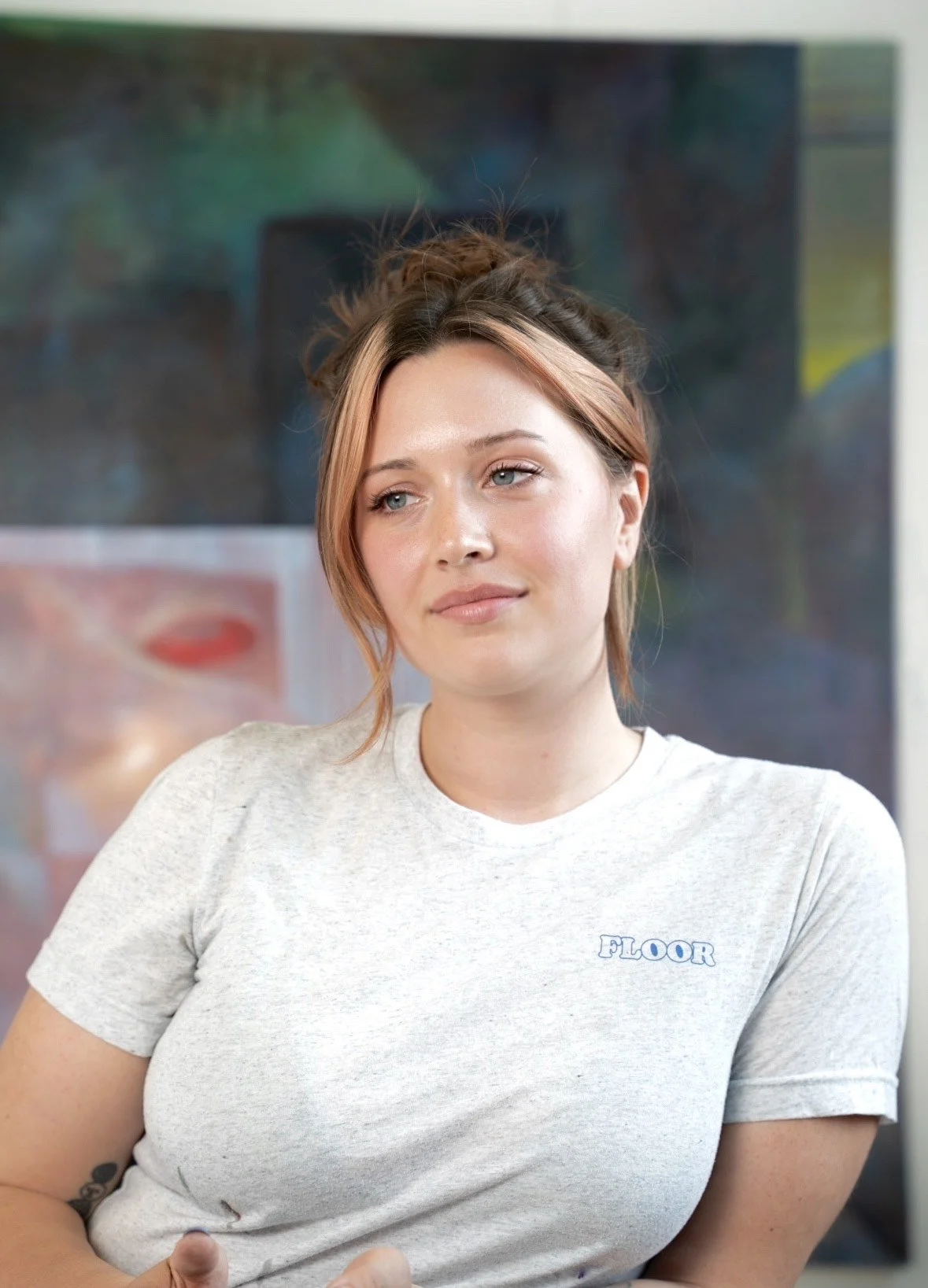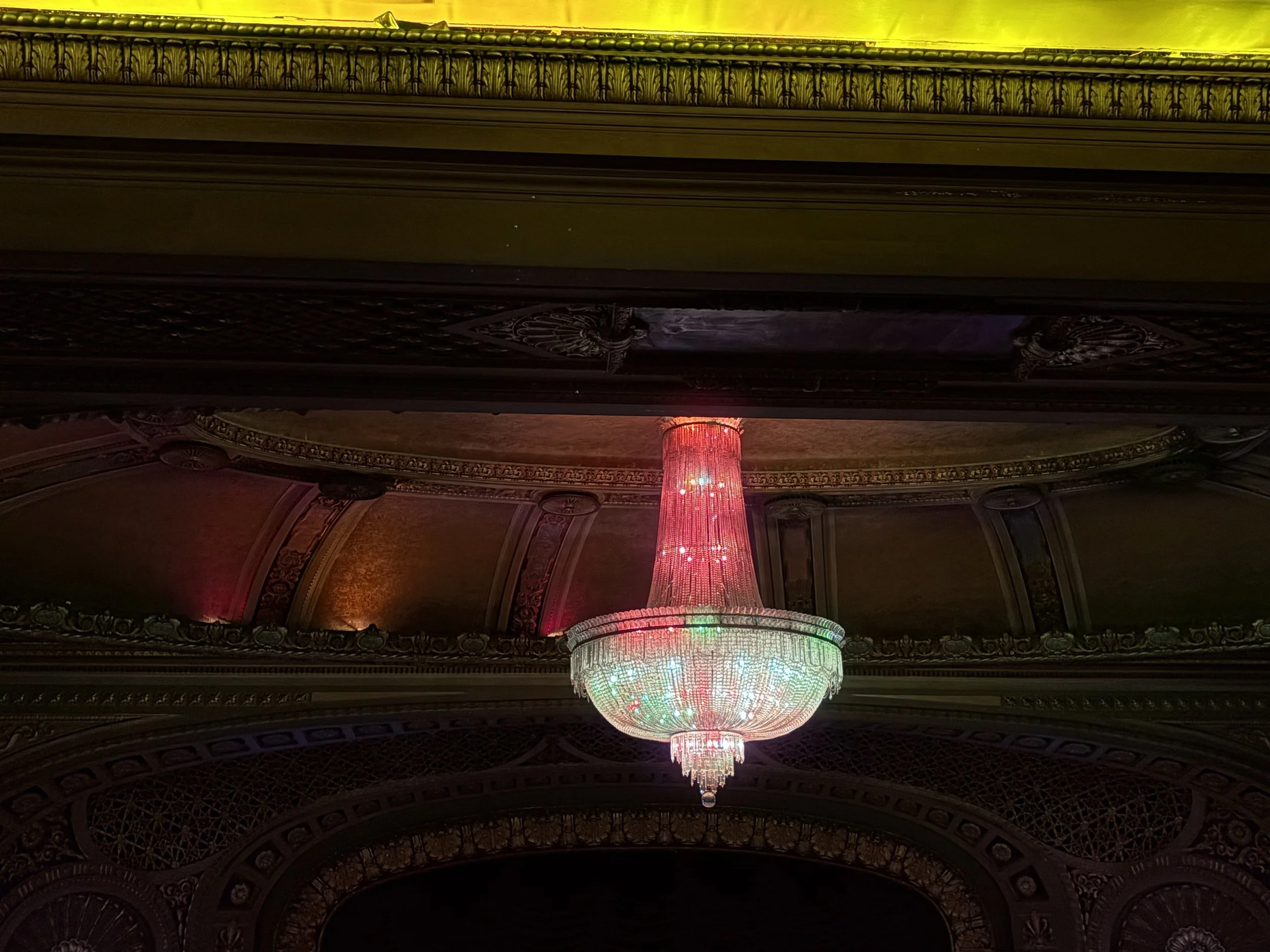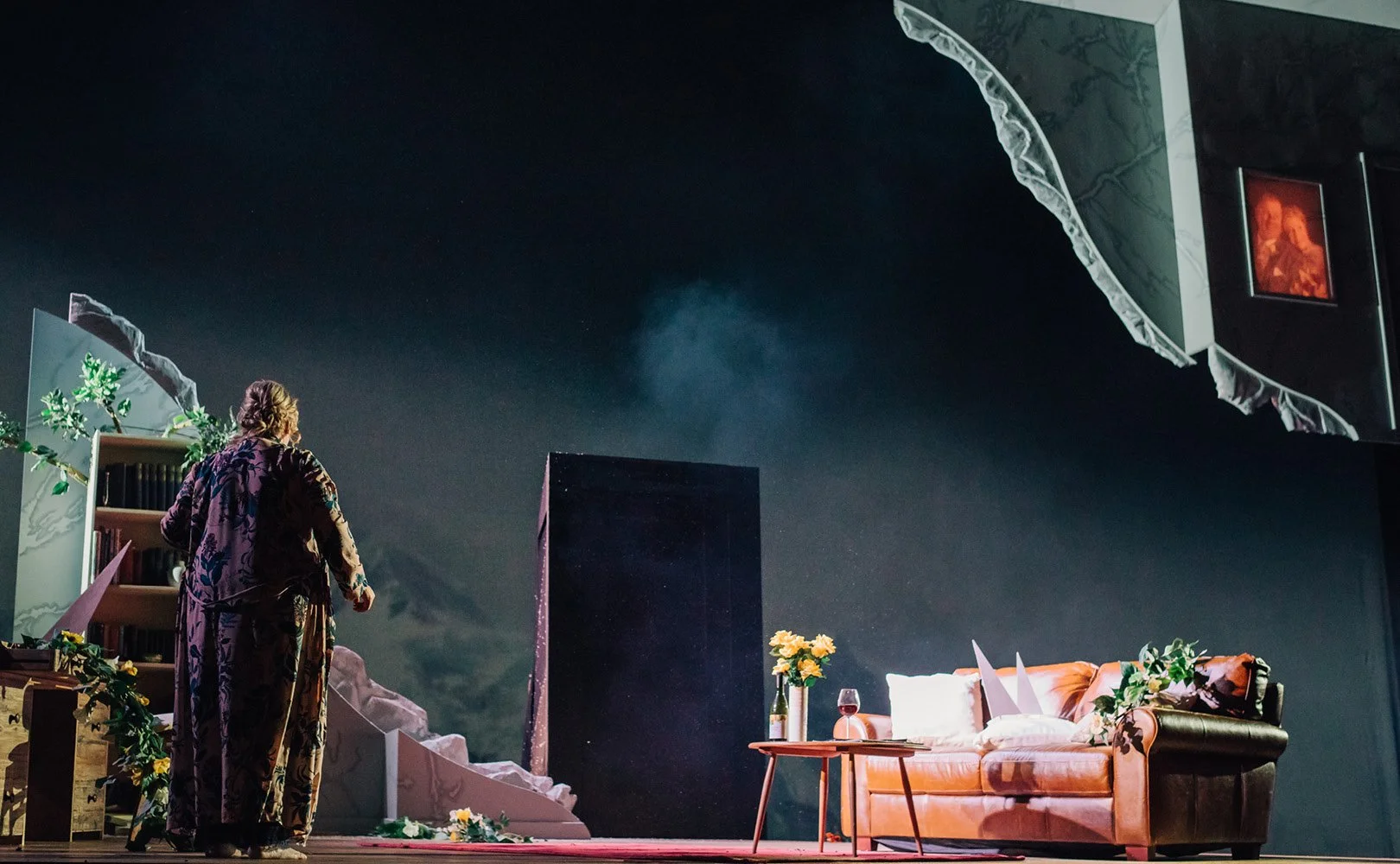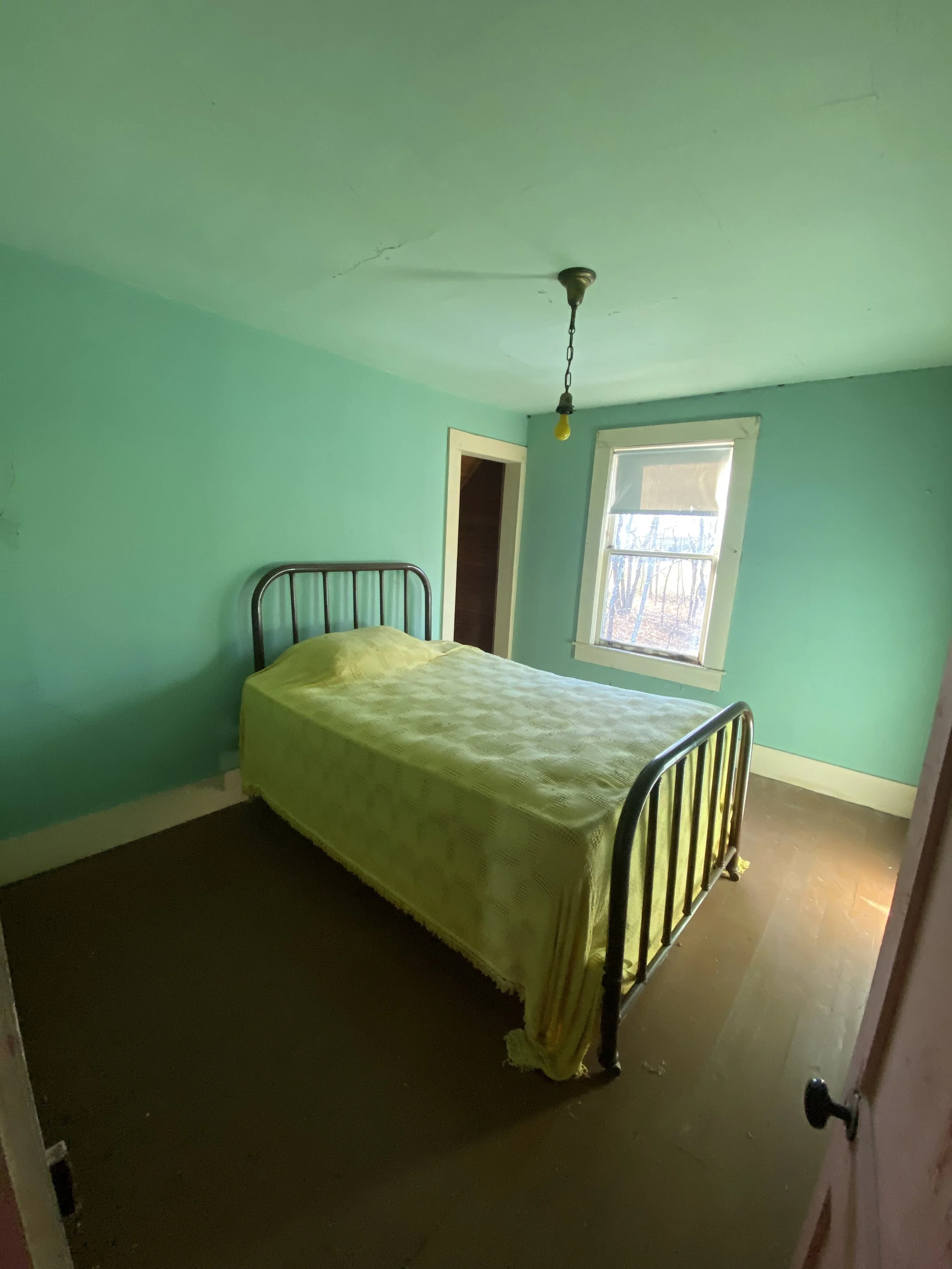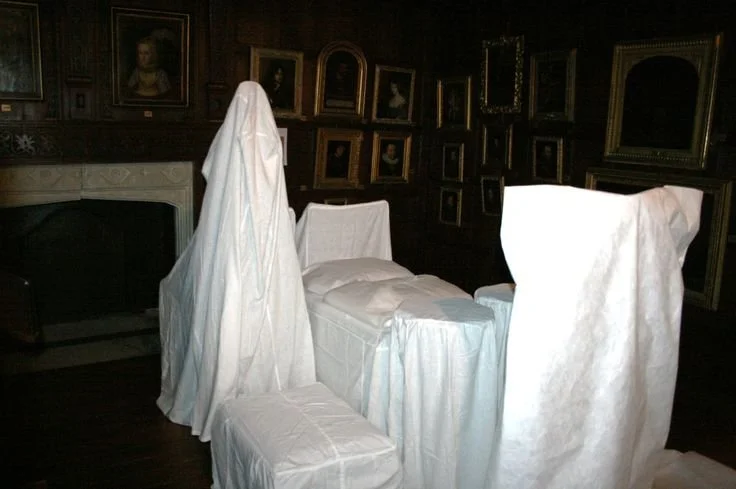Grace Bromley
-
Grace Bromley’s paintings explore instability and transformation through a language of ethereal forms and architectural interiors. Built up through countless layers of paint, her compositions dissolve boundaries between body, room, and atmosphere, evoking a world caught between states of matter. Doorways, ever-present and ominous, anchor the work in a quiet, unresolved tension that speaks to domestic space, caretaking, and the inevitability of change.
Grace Bromley (b. 1994, Park Ridge, IL; lives and works in Richmond, VA) holds an MFA from Virginia Commonwealth University and. BFA from The School of The Art Institute of Chicago. Her work has been featured in group exhibitions at Steven Zevitas Gallery, Boston, MA; Jack Hanley Gallery, New York, NY; Mariam Cramer Projects, Amsterdam, NL; LBF Contemporary London, UK; D.D.D.D. Pictures, New York, NY; among others. She will have a forthcoming exhibition with Megan Mulrooney.
Studio Fragments with Grace Bromley
In the lead-up to her first solo exhibition Show Me What I Don’t Know, opening July 12 at the gallery, artist Grace Bromley has been thinking about thresholds – physical ones like doorways and curtains, but also psychic ones: the edge of memory, the moment just before an intuition becomes legible. Her dreamlike paintings are abstract miasmas of whirling color, anchored by glimmers of architecture and figuration.
We asked Grace what she’s been thinking about in the studio as a way of mapping the conceptual and emotional terrain of her show. What follows is a loose constellation of references, ideas, and images that have accompanied her throughout the making of this body of work. Together, they form a kind of emotional architecture – a world in which beds become stages, fairy tales morph into allegories, and the supernatural is, as Clarice Lispector once said, already folded into the natural.
REVERSE THEATERS
There are some theaters called “reverse theaters” where the audience enters the auditorium from under the stage. Upon entering the room, the whole audience is staring at you and the play is happening above your head. It reminds me of painting and the performance of it, and of romance, too; in both, you are a performer and an audience member at the same time.
There is a reverse theatre in my best friend’s home town of Boonton, New Jersey. There is also an old theatre in Richmond called the Byrd, and The Music Box in Chicago – both cities where I have lived and spent a lot of time alone in. Wherever I have moved, I’ve always tried to find the old theatres. It's kind of a sublime experience: the lighting and anonymity of being just one in a crowd, surrounded by so much dark and extravagant space. That type of insignificance is hard to feel nowadays, because everybody feels like they have to be somebody.
Also, the drama of the red light is something I am always trying to bring into the work. My dad made neon signs as a kid, and I spent a lot of time in his small shop. Bright colored light as a kind of ambient hum within darkness has always been something I’ve tried to harness with paint.
BEDS
I’ve been looking into the history of women artists and beds – think Tracy Emin, Louise Bourgeois. Women throughout history who can’t get out of bed have been positioned as either shameful (sex) or sloth (mental illness). Depicting the bed becomes a kind of third space.
Over the past few years, I have been caring for my mom, who was going through chemotherapy for breast cancer. I saw how much it weakened her and how frustrated she was with how much rest she needed. It made me realize how women rely so much on what they can do and how deep the aversion is to staying still, pausing.
I love the idea of neutralizing but also complicating the bed – like in Blue Room, where it tips forward without the front legs showing. The figure is kind of keeled over the edge, almost sliding out of the painting. There is also an element of eyes in the work, like the bed itself has a point of view.
Bluebeard’s Castle, Matthew Lenton’s 2017 production for Scottish OperaFAIRY TALES
While painting the doors within my paintings, I’ve been thinking about Bluebeard’s wife, a curious, transgressive woman who disobeys her husband’s command not to open a door, revealing his past violence. Her resistance to blind obedience ultimately saves her. The Princess and the Pea has another great example of a character who is often read as sensitive, but could also be interpreted as particular, resistant, or difficult in more interesting ways: dissatisfied, demanding, sensitive, or unwilling to conform quietly to expectations. I was thinking of her while painting the beds within the works.
Fairy tales always come up for me because before there was painting, there were stories. I am an avid reader and love fiction – it's actually where I get most of my ideas for paintings. I think of fairy tales and delusions similarly: the fairy tale of the perfect relationship, the perfect place to live, the constant desire for more. With this work, I wanted to dispel all my fairytales and just sit in ambiguity.
I’m also drawn to the difference between fairy tales and myths: fairy tales are more nonsensical, more psychological, less about ethics. I like the uncertainty of them, like the imagery of a woman who is so sensitive she can feel a pea under eighteen mattresses. That kind of mischievousness doesn’t get dubbed as “bad,” it just is.
THE SUPERNATURAL
Salgueiro: Clarice, this is a question from a journalist: “You’re an intuitive. So how do you deal with the supernatural in your life?”
Lispector: What’s natural is supernatural, too. Don’t think that it’s very far off. What’s natural is already a mystery.
- From a 1977 interview with Clarice Lispector, published in The New Yorker
This quote has stuck with me because it shows that mundane memories can be a playground for fantastical projection, little windows to escape into. It makes me think about how you can try to go back to an old life you’ve outgrown or abandoned, only to find there’s no shape carved out for you anymore.
That idea connects to my longstanding fascination with ghosts. I think it comes from being surrounded by old objects while growing up, and from being partially raised by my grandma who passed away when I was 19. Ghosts try to return to their former lives, but the structure of those lives has shifted. There is no longer a place, or a shape, for them to fit into. In my work, these ideas surface as figures that haunt architectural spaces, never quite able to settle within them.
There is also a literal side to this, like when you return to an old relationship or place, it rarely feels the same. The discomfort of being so out of sync with your past can be a supernatural experience: when something life-altering happens, it feels like jumping timelines.
Spiritualism has always interested me. Jennifer Higgie’s The Other Side was a favorite read of mine this year. Female artists gravitated towards it because they were sidelined from the mainstream anyway. I love how artists like Hilma Af Klint were able to make such strange and authentic work in private because they were ignored publicly anyhow. There was a benefit to that type of invisibility and anonymity.




